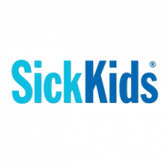Neuroprotection Strategies: A Critical Piece of Cardiac Critical Care

Summary
I was honoured to receive the ACPF offered by RNAO so that I could fully immerse myself in learning more about the importance of neurodevelopmental care in our cardiac critical care unit (CCCU). Congenital heart disease (CHD) is the most common birth defect occurring 1 in 100 babies. With recent advances in surgical technique and post-operative cardiac intensive care, survival rates have increased significantly to over 80% of children now surviving to adulthood (Marino et al., 2012). Despite these improvements, neurodevelopmental outcomes in children with CHD remain poor, with more than 50% of infants and children with complex CHD presenting with some form of motor, language, cognitive, or behavioural delay (Marino et al, 2012). These delays have significant impact on the child and family and significant burden on the education and healthcare systems. At SickKids, we complete more than 800 complex cardiac surgeries per year in neonates, infants, and children. Our 20 bed Cardiac Critical Care Unit (CCCU) provides world class cardiac care. Despite this, our patients with CHD continue to have poor long-term neurodevelopmental outcomes. One key area that has been identified to impact the outcomes of these children is enhancing infant-parent bonding and engagement of parents in developmentally focused care while their child is in the CCCU.
My goal through the completion of this RNAO clinical practice fellowship was to enhance my knowledge on neuroprotective strategies for neonates and infants in the CCCU as well as evolve my leadership and communication skills by developing a neuroprotection guideline and effectively disseminating the guideline to my peers in the CCCU at SickKids. To gain a deeper understanding of neurodevelopment and infancy I attended the Neonatal Touch and Massage course that was offered virtually and became nurse certified. This foundational knowledge and skillset empowered me to support my colleagues in infant positioning and made me a leader in massage and touch in our unit. Through hands on bedside clinical teaching, I was able to teach proper positioning as well as facilitate skin-to-skin holding. Not only did I provide leadership and support to colleagues, I was also able to bring this knowledge to parents and caregivers and enabled them to connect with their children through touch and massage.
Through this teaching, it empowered parents to become better advocates for their children and speak up for their needs. I was able to bring my enthusiasm and knowledge to my peers through a presentation I developed for our education days. The goal of these education days was to provide evidence-based practice on positioning and the importance of skin-to-skin care and initiate a discussion over how to have skin-to-skin holding incorporated into our daily care unit wide.
Outcomes
The client population of this fellowship included newborn infants born with CHD admitted to the Cardiac Critical Care Unit, their parents and caregivers as well as the nursing and medical staff on the Cardiac Critical Care Unit at The Hospital For Sick Children. Through this fellowship I was able to walk around and teach parents about proper positioning and the benefits of skin-to-skin touch and what skin-to-skin touch can look like (by holding our touch). Parents became better advocates for their children, asking daily if their children could be held and/or providing positive touch to their children. Parents were hesitant to hold their babies because they were anxious over all the tubes and lines, but through teaching at the bedside parents understood the benefits of skin-to-skin and that it was safe to do. Through surveys I developed, a common theme from all staff was to have resources readily available on neuroprotective strategies that can be easily utilized in the Cardiac Critical Care Unit. I developed a TEAMS channel where I put resources such as the parent tip sheets on skin-to-skin holding I created as well as the skin-to-skin holding guideline I developed. Doing this fellowship during a worldwide pandemic made it difficult to really connect with my peers as well as the parents/caregivers of the infants in our care. With visitation restrictions and staffing shortages I felt that it was more difficult to find time to connect and chat with families (only one parent present who was under stress and not wanting to always chat at the moments I was available) or with staffing shortages and nurses being busy and stretched multiple ways, it was difficult to walk in and try to change their daily plans to find time to facilitate skin-to-skin holding. I did find it easier to focus on positioning in my one on one “just in time (JIT)” training.
Overall experience
I thoroughly enjoyed my fellowship time and it was a great opportunity to explore my interest in neurodevelopment and cardiac critical care. I was able to set out and accomplish what I wanted to do which was get the momentum started on the importance of incorporating neurodevelopmental strategies into cardiac critical care. Through my surveys I disseminated to the staff, one important theme was that it was very helpful to have someone dedicated to help facilitate skin-to-skin holding, especially on a unit as busy as ours. This fellowship allowed me to network with other centres across North America and discuss ways in which they have started to incorporate neuroprotective strategies into their cardiac ICUs. I hope to continue my calling to neurodevelopment and Cardiac Critical Care and obtain FINE training and one day become NIDCAP trained to bring individualized care to our unit. My mentor and I have talked about how this role is so important and in noticing the impact this fellowship has had, we would like to create a Professional Practice Clinician role specialized in neurodevelopment and work across the Labatt Family Heart Centre at The Hospital for Sick Children to continue this work and optimize patient outcomes.
